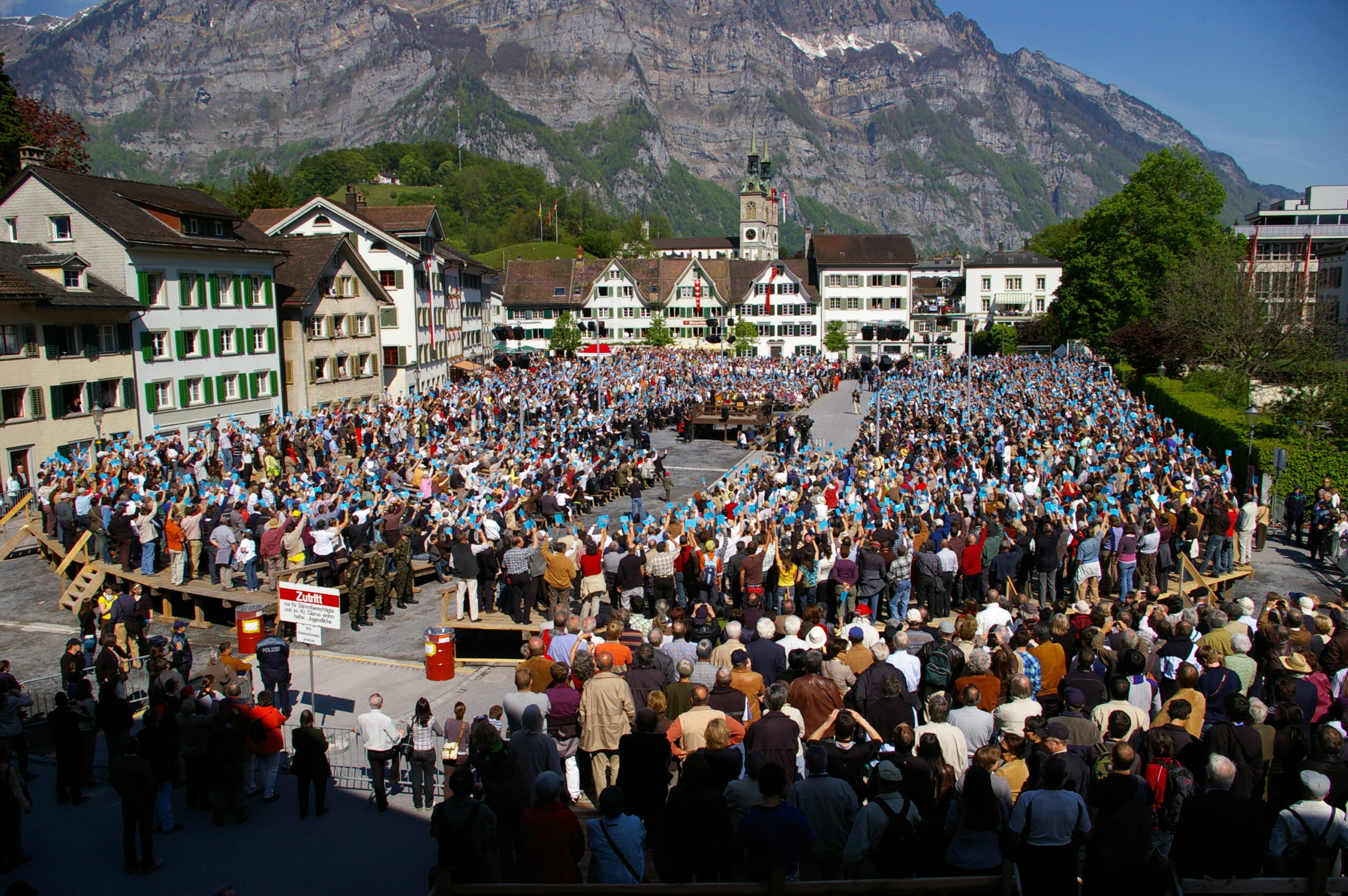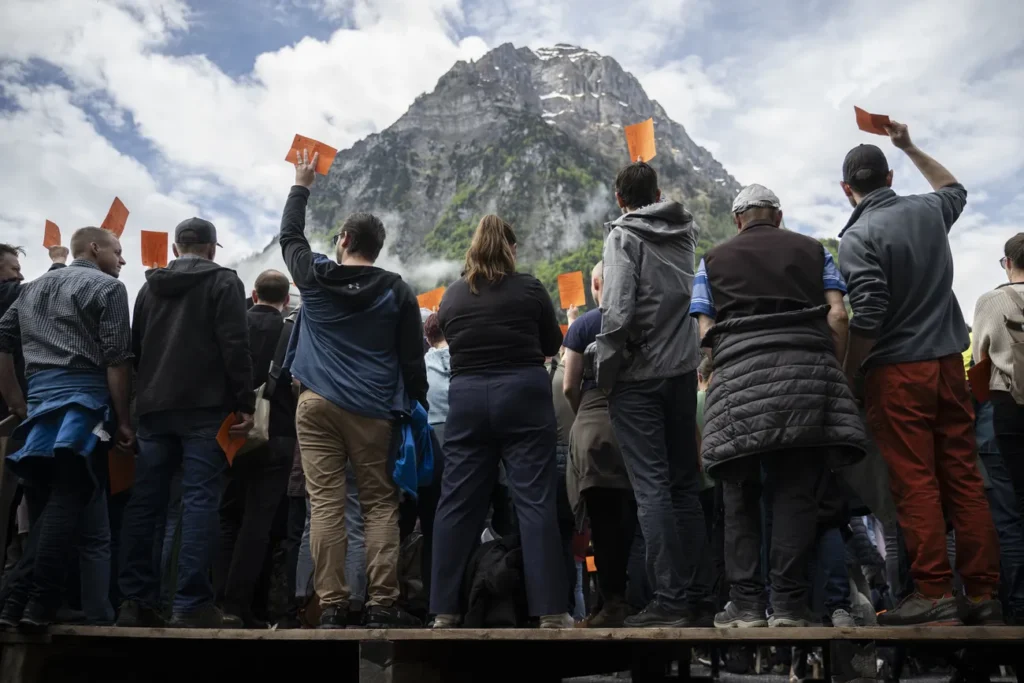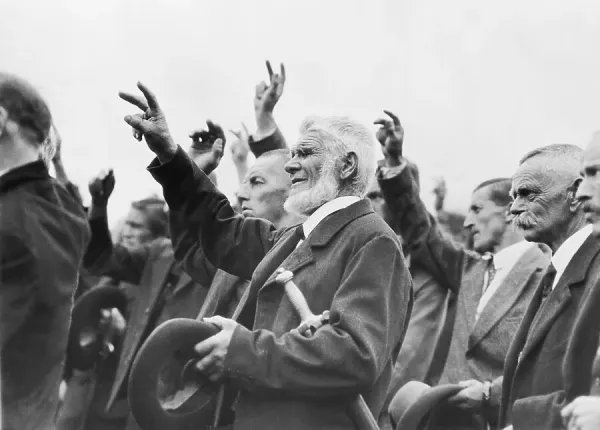No Polls, No Machines, Just Hands in the Air: Inside the Swiss Tradition of Landsgemeinde Voting

Introduction
In an age dominated by digital ballots, electronic voting machines, and online referendums, one Swiss town maintains a centuries-old democratic tradition that is as simple as it is symbolic. Each year, citizens of Appenzell Innerrhoden, Switzerland’s smallest canton, gather in a public square—not to submit ballots or punch cards, but to raise their hands in collective decision-making.
This practice is called the Landsgemeinde, a rare and powerful example of direct democracy, where eligible citizens vote in person, in open air, and in full view of their neighbors. With no polling stations, no anonymous ballots, and no technology, the Landsgemeinde remains one of the oldest forms of participatory government in the world.
What Is Landsgemeinde?
🔹 Definition:
The Landsgemeinde, which translates to “community assembly” or “cantonal assembly,” is a public, open-air legislative meeting where eligible voters of the canton gather to vote by raising their hands on matters of law, tax, appointments, and more.
🔹 Where It Happens:
As of today, it is only practiced in two Swiss cantons:
- Appenzell Innerrhoden
- Glarus
These assemblies occur once a year, usually in spring.

A Brief History of Landsgemeinde
📜 Origins:
- Dates back to the 13th century, with earliest references around 1291, the same year Switzerland’s confederation was founded.
- Rooted in medieval Germanic tribal traditions of communal self-governance.
- Symbolized freedom from feudal rule, allowing citizens to have a say in their laws and leaders.
🏛️ Institutionalization:
- Became a formal system of governance in Swiss rural cantons by the 15th century.
- Historically, all free male citizens could participate. Over time, suffrage expanded.
👩 Women’s Inclusion:
- Women were excluded from voting in the Landsgemeinde until 1991, when a Swiss federal court forced Appenzell Innerrhoden to allow women to vote.
How It Works: The Process of Hand-Voting
📍 Location:
- Takes place in the town square of the cantonal capital—Appenzell village, for example.
- Citizens gather under the open sky, usually in front of the courthouse or assembly house.
🧑🤝🧑 Who Can Vote:
- All adult citizens of the canton, including women (since 1991).
- Voters must be physically present; there is no proxy or absentee voting.
🖐️ The Voting Procedure:
- The Landammann (chief magistrate) presides over the assembly.
- Issues on the agenda are read aloud—ranging from laws and budgets to judicial appointments.
- When ready, the magistrate calls for a vote.
- Citizens raise their hands in support.
- The majority is judged by sight by vote counters on a raised platform.
- No paper. No machines. Just hands in the air.
🔍 Accuracy and Fairness:
- Voting is public, so social pressure plays a role.
- No exact count—the presiding officer visually estimates which side has the majority.
- If too close to call, a repeat vote or split discussion may be held.
The Atmosphere: A Ritual of Community and Identity
- The Landsgemeinde is not just about laws—it’s a festival of civic pride.
- People attend in traditional Swiss garb, sometimes armed with swords as a symbolic rite.
- The event is usually followed by parades, music, and shared meals, reinforcing community bonds.
What Is Voted On?
Topics often include:
- Cantonal budgets and taxes
- Education and healthcare reforms
- Legal amendments
- Electing judges, legislators, and council members
- Land use and zoning regulations
This format offers direct control over cantonal decisions that, in most democracies, are handled by representatives.

Advantages of the Landsgemeinde System
✅ Direct Democracy in Action:
- No intermediaries, lobbyists, or party machinery—the people legislate themselves.
✅ Transparency:
- Everyone can see the outcome, eliminating the need for recounts or audits.
✅ Community Engagement:
- Promotes civic participation, public discourse, and shared responsibility.
Challenges and Criticisms
⚠️ Social Pressure:
- Public voting removes anonymity, making some feel coerced by peers or community leaders.
⚠️ Impractical for Large Populations:
- Works well in small cantons like Appenzell (population ~16,000), but is not scalable to cities or nations.
⚠️ Subjectivity:
- No exact count, meaning decisions rely on the judgment of the vote counters.
- In contentious votes, this can lead to disputes or calls for reform.
⚠️ Weather Dependent:
- Being outdoors, the assembly can be affected by bad weather—rain, snow, or heat.
The Decline of Landsgemeinde in Switzerland
At one point, over a dozen cantons practiced the Landsgemeinde. But over the 19th and 20th centuries, most abandoned it due to:
- Population growth
- Need for secret ballots
- Increased legal complexity
Only Appenzell Innerrhoden and Glarus still hold to this ancient custom.
Why It Still Matters
Despite its quirks, the Landsgemeinde remains:
- A symbol of Swiss identity and grassroots governance
- A living reminder of democracy’s roots in face-to-face consensus
- An embodiment of trust, participation, and civic tradition
It challenges modern assumptions that high-tech equals high-function—and proves that sometimes, the oldest tools still work best.

Conclusion
In Appenzell Innerrhoden, democracy doesn’t come in a digital box or behind a polling curtain—it arrives with the spring sun, in a town square, through hands raised in unison. The Landsgemeinde may seem antiquated, but it offers a rare and refreshing reminder that democracy is, at its core, about people coming together to make decisions—openly, directly, and as equals.
In a world of increasing political distance and digital disconnection, the Landsgemeinde is both an anomaly and an inspiration.




